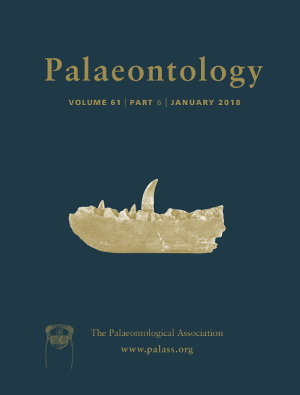Reg. Charity No. 1168330

We present the first quantitative palaeobiogeographical analysis in terms of distribution and abundance of Early Triassic ammonoids from the western USA basin during the Smithian, c. 1 myr after the Permian–Triassic boundary mass extinction. The faunal dataset consists of a taxonomically homogenized compilation of spatial and temporal occurrences and abundances from 27 sections distributed within the western USA basin. Two complementary multivariate techniques were applied to identify the main biogeographical structuring recorded in the analysed presence/absence data: additive cluster analysis using the neighbor‐joining algorithm (NJ) and non‐metric multidimensional scaling (NMDS). Regarding abundance data, a taxonomic diversity (sensu evenness) analysis was coupled with graphical comparisons of relative abundances of selected taxa. The identified relationships indicate that middle Smithian ammonoids of the western USA basin were geographically organized in terms of both distribution and abundance, with the biogeographical distinction of a southern and a northern cluster. This N–S structuring in the distribution and abundance of middle Smithian ammonoids is notably paralleled by the relative amount of siliciclastics, which suggests that clastic load of the water column was a major controlling factor. In marked contrast with the middle Smithian, the studied late Smithian ammonoid assemblages do not show any significant differences, whatever the depositional environment. This abrupt biogeographical homogenization, independent from intrabasinal facies heterogeneity, indicates a switch from regional to global drivers, associated with the well‐known late Smithian global extinction and remarkable cosmopolitan ammonoid distributions during that time.